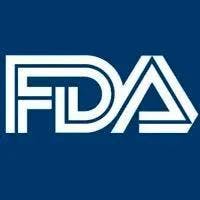Commentary
Article
Urology Times Journal
Prostate cancer management: Progress over 3 decades
Author(s):
"The landscape of prostate cancer management has evolved significantly over the past 30 years, with [active surveillance], advances in imaging and genetics, and improvements in the treatment of high-risk disease marking key areas of progress," writes Michael S. Cookson, MD, MMHC.
“Continuous improvement is better than delayed perfection.” —Mark Twain
Michael S. Cookson, MD, MMHC

Prostate cancer is a major disease, and its management has seen important advances over the past 30 years. Most of these advancements can be attributed to tremendous advocacy for education and awareness of the disease, especially around early detection and screening. Since 2003, September has been proclaimed Prostate Cancer Awareness Month in the US. Consequently, prostate cancer gets extra attention that month, and we get to potentially see more men who otherwise may not come forward for a prostate-specific antigen (PSA) test. We also enjoy riding the coattails of the extensive coverage of Movember, the annual event dedicated to raising awareness of men’s health issues, including prostate cancer, in November. However, as I am reminded, cancer never takes a holiday or a weekend. Every day and every month present opportunities (and challenges) to promote the early detection of prostate cancer and potentially save lives.
One of the biggest areas of improvement in prostate cancer care has been with low-risk, localized disease. Over the past 3 decades, treatment for prostate cancer has trended away from relatively aggressive interventions such as radical prostatectomy and radiation therapy in these patients. Treatments offered with good intention and curative intent often were associated with significant adverse events, including urinary incontinence and erectile dysfunction. A better understanding of the natural history of low-risk disease coupled with its impact on quality of life led to a reconsideration of the aggressive treatment for patients with low-risk disease.
Around the beginning of 2000, active surveillance (AS) evolved as a reasonable management choice for patients with low-risk prostate cancer. AS, characterized by careful monitoring without immediate treatment, was originally reserved for older patients or those with significant comorbidities and was labeled watchful waiting. AS has evolved and is being embraced by younger patients, particularly those with low-risk cancer (as determined by a Gleason score of 6 or lower). It can also be appropriate for select patients with intermediate-risk cancer (Gleason score of 7). AS has become the preferred treatment option for 70% to 80% of patients with low-risk disease, compared with only 10% to 20% in the early 2000s.1 The increase results from greater adoption of the Gleason scoring system in the clinic and among patients as well as greater confidence in the strategies for keeping the cancer in check while maintaining the patient’s quality of life.
The widespread adoption of AS has been accompanied by advancements in prostate cancer imaging, particularly the application of multi-parametric MRI (mpMRI). Prostate MRI has revolutionized the way physicians assess prostate cancer, enhancing their ability to detect and characterize aggressive disease. Prostate MRI helps distinguish between patients who are suitable for continued surveillance and those who may require more aggressive treatment. Studies have demonstrated the ability of mpMRI to detect aggressive cancer over random sampling, and that MRI reduces the need for invasive repeat biopsies, procedures that are often associated with anxiety and potential complications.2
In addition to improving diagnostic accuracy, mpMRI has contributed to the concept of deintensification of monitoring. For suitable candidates with stable, low-risk disease and favorable imaging, fewer biopsies and less frequent follow-up can be a safe and cost-effective strategy. By decreasing the intensity of monitoring, patients on AS can avoid unnecessary interventions, reducing the physical discomfort and psychological burden, as well as health care costs, while maintaining safety.
Another important innovation in prostate cancer management is the use of genetic classifiers for more refined risk stratification. Genomic tests, such as the Decipher test and Oncotype DX Genomic Prostate Score, analyze the expression of specific genes associated with cancer aggressiveness, providing valuable insights into whether a patient should continue with AS or pursue active treatment.3 These tools offer a more personalized approach to prostate cancer care, allowing clinicians to make better-informed decisions about individual disease management. Genomic tests are particularly useful in cases in which there is ambiguity about the disease's aggressiveness. This molecular-level understanding has enhanced the precision of treatment decisions, particularly in distinguishing patients who may benefit from aggressive treatment from those who can safely remain on AS.
Over time, AS protocols have also evolved, becoming less intensive without compromising safety.4 Initially, AS regimens included frequent PSA testing, digital rectal exams, and repeat biopsies. However, data from long-term studies have shown that fewer biopsies and less frequent follow-up can be safe for certain patients. For instance, Klotz et al demonstrated that many patients with low-risk prostate cancer could safely extend the intervals between biopsies and follow-up visits without increased risk of progression.5 This evolution in surveillance protocols highlights a growing recognition that over-monitoring may not always be necessary, particularly for patients with stable, low-risk disease.6 By reducing the burden of monitoring, AS has become a more attractive option for many men, allowing them to avoid the potential adverse effects and anxiety associated with more frequent interventions. I think the time has come for a stand-alone guideline on AS given its prominence in the management of low-risk disease.
Although significant strides have been made in managing low-risk prostate cancer, advances in the treatment of high-risk disease have also been remarkable. Improved staging techniques, such as the use of prostate-specific membrane antigen (PSMA)-PET imaging, have enhanced our ability to accurately identify high-risk disease and guide treatment decisions.7 PSMA-PET imaging offers superior sensitivity compared with traditional imaging modalities, enabling earlier detection of metastasis and more precise treatment planning.
In terms of treatment, multimodal therapy has become the standard approach for high-risk prostate cancer, often involving surgery, radiation therapy, androgen deprivation therapy (ADT), and androgen receptor (AR)-targeted therapies. Current ongoing clinical trials are investigating the potential benefits of combining ADT with AR-targeted therapies and surgery to improve long-term cancer control. These efforts reflect an ongoing commitment to refining treatment strategies to reduce the likelihood of disease recurrence and progression, which remain significant concerns in high-risk prostate cancer cases. The true holy grail will be a more precision-based approach to neoadjuvant and adjuvant therapy based on a refinement of clinical, pathologic, molecular, and imaging tools.
The past 3 decades have seen significant progress in the management of localized prostate cancer, particularly in the shift from aggressive treatment to more conservative approaches such as AS. As AS becomes increasingly accepted for patients with low-risk disease, the intensity of monitoring is being reduced, further improving the quality of life for men with prostate cancer. Advances in imaging, such as mpMRI, PSMA-PET, and genetic classifiers have enhanced the precision of risk stratification and treatment decisions, contributing to a more personalized and patient-centered approach to care.
Although much progress has been made, challenges remain, particularly in the management of high-risk prostate cancer. Ongoing clinical trials and research into multimodal therapies hold promise for improving outcomes for men with aggressive disease. Advocacy efforts, including Prostate Cancer Awareness Month and Movember, will continue to play a crucial role in raising awareness and promoting early detection, ensuring that more men have access to life-saving information and care.
In conclusion, the landscape of prostate cancer management has evolved significantly over the past 30 years, with AS, advances in imaging and genetics, and improvements in the treatment of high-risk disease marking key areas of progress. These developments reflect a broader shift toward more personalized, deintensification or intensification that is risk stratified appropriate care, offering hope for better outcomes and improved quality of life for men with prostate cancer.
REFERENCES
1. Cooperberg MR, Meeks W, Fang R, Gaylis FD, Catalona WJ, Makarov DV. Time trends and variation in the use of active surveillance for management of low-risk prostate cancer in the US. JAMA Netw Open. 2023;6(3):e231439. doi:10.1001/jamanetworkopen.2023.1439
2. Fernandes MC, Yildirim O, Woo S, Vargas HA, Hricak H. The role of MRI in prostate cancer: current and future directions. MAGMA. 2022;35(4):503-521. doi:10.1007/s10334-022-01006-6
3. Klein EA, Cooperberg MR, Magi-Galluzzi C, et al. A 17-gene assay to predict prostate cancer aggressiveness in the context of Gleason grade heterogeneity, tumor multifocality, and biopsy undersampling. Eur Urol. 2014;66(3):550-560. doi:10.1016/j.eururo.2014.05.004
4. Cooperberg MR, Zheng Y, Faino AV, et al. Tailoring intensity of active surveillance for low-risk prostate cancer based on individualized prediction of risk stability. JAMA Oncol. 2020;6(10):e203187. doi:10.1001/jamaoncol.2020.3187
5. Klotz L, Vesprini D, Sethukavalan P, et al. Long-term follow-up of a large active surveillance cohort of patients with prostate cancer. J Clin Oncol. 2015;33(3):272-277. doi:10.1200/JCO.2014.55.1192
6. Tosoian JJ, Mamawala M, Epstein JI, et al. Intermediate and longer-term outcomes from a prospective active-surveillance program for favorable-risk prostate cancer. J Clin Oncol. 2015;33(30):3379-3385. doi:10.1200/JCO.2015.62.5764
7. Combes AD, Palma CA, Calopedos R, et al. PSMA PET-CT in the diagnosis and staging of prostate cancer. Diagnostics (Basel). 2022;12(11):2594. doi:10.3390/diagnostics12112594

Newsletter
Stay current with the latest urology news and practice-changing insights — sign up now for the essential updates every urologist needs.






























